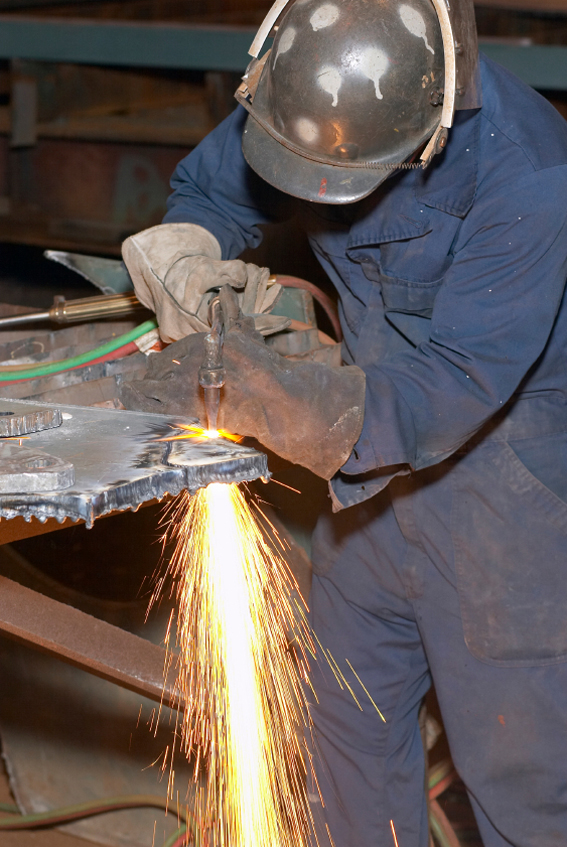Shipfitters and Mesothelioma
Mesothelioma Pipes Itself Stem to Stern in Shipfitters
You keep fuel flowing freely to the powerful engines that turn the screws that propel big ships through rough and calm seas alike.
You see to it that clean water and steam travels unimpeded within the miles and miles of pipe looping below decks and inside vessel superstructures.
You patch leaks and replace broken connectors on the lines that carry all types of necessary liquids and gasses aboard ship, whether in times of war or peace.
You are a shipfitter. And, as a shipfitter, you’ve probably been exposed to asbestos. If so, you face a high risk of developing mesothelioma.
Many ships are awash in asbestos. You would be likely to run into the mineral while working with:
- Lagging and heat-protective blankets
- Welding rods
- Valve gaskets and coatings
- Boilers and pumps
Asbestos is a mineral. It’s used to prevent things that are flammable from catching on fire.
It’s also used to keep things cool to the touch on the outside when they normally are blazing hot on the inside. A steam pipe is a perfect example.
Asbestos has other uses too. One of them is to make materials like metal and concrete stronger and more durable. Another is to make those same materials weigh less.
Asbestos Use by Shipbuilders

Asbestos has been used in the making and fitting of ships since before the age of the dreadnoughts arrived at the beginning of the 20th century.
Shipbuilders have had a particular fondness for asbestos for two reasons. First, it worked incredibly well. Second, it was dirt cheap.
And there were two reasons why it was dirt cheap. First, it was plentiful. Second, it was easy to mine.
Yes, shipbuilders were inclined to use asbestos — lots of asbestos — because it was profitable.
But the more basic reason they wanted to use it was to keep crews safe from fire and charring heat.
Unfortunately, asbestos has been a curse as well. The curse begins when you do something that causes a disturbance of the asbestos.
Asbestos is disturbed if you intentionally cut or accidentally rip a section of pipe lagging.
Or if you hammer, saw, drill, rivet, weld or perform almost any other operation on a piece of material containing asbestos.
These actions cause tiny particles of asbestos to break free and enter the air.
Inside a ship, asbestos in the air can build up into fairly heavy concentrations because of the confined spaces and poor ventilation.
Trouble comes if you inhale or swallow some of that airborne asbestos. It goes deep into your lungs or ends up in your intestines. There it remains for years and decades.
In that span of time, the trapped asbestos works hard at converting the healthy cells that line your lungs or your abdominal cavity into cancerous ones.
The asbestos doesn’t always succeed. But when it does, the cancer cells quickly group into a tumor that then quickly spawns other tumors. Before you know it, the cancer completely takes over.
This dark side of asbestos has been known for a long time now to shipbuilders and to the companies that supply shipbuilding materials.
The government knows it too. That’s why ships built in the U.S. since the 1980s make minimal use of asbestos — it’s also why today you’ll most likely encounter asbestos only when working on older vessels.
Unions Know Mesothelioma Is Unfair
The government moved against asbestos when it did in part because of the activism of trade unions concerned about the health and safety of their members.
Unions made demands that something be done about the blight of asbestos. The government acted, but the unions also took steps to address the problem head on.
For example, if you’re a member of the United Association — the Union of Plumbers, Fitters, Welders and HVAC Service Techs, you can be proud of the role your organization played in getting asbestos tossed overboard.
Right now, the UA is still flexing its muscle when it comes to asbestos and the threat of mesothelioma that you and other shipfitters face.
That’s why you should contact the UA today to find out the specifics of what it can do for you to keep you mesothelioma-free.
Whether it’s education or access to health benefits, the UA is your go-to source for battling this horrific disease.
